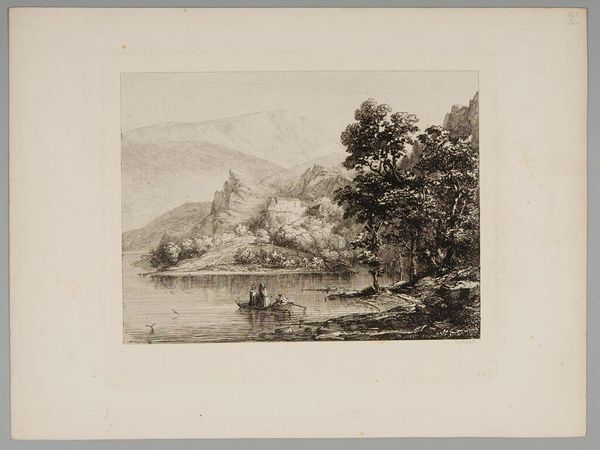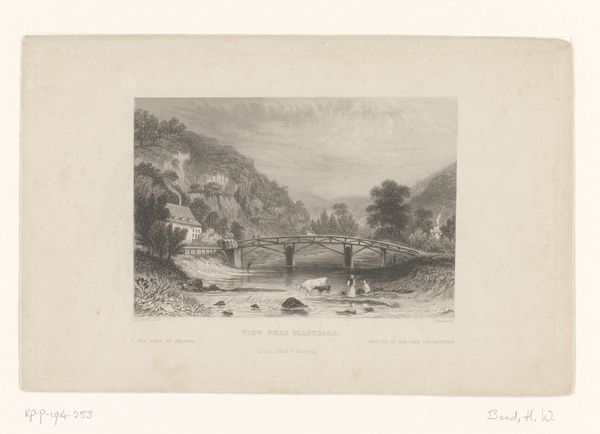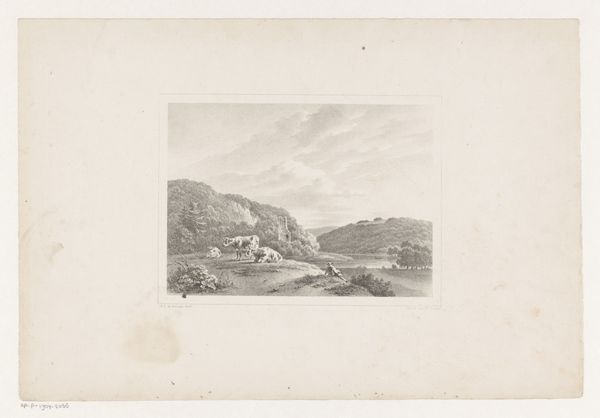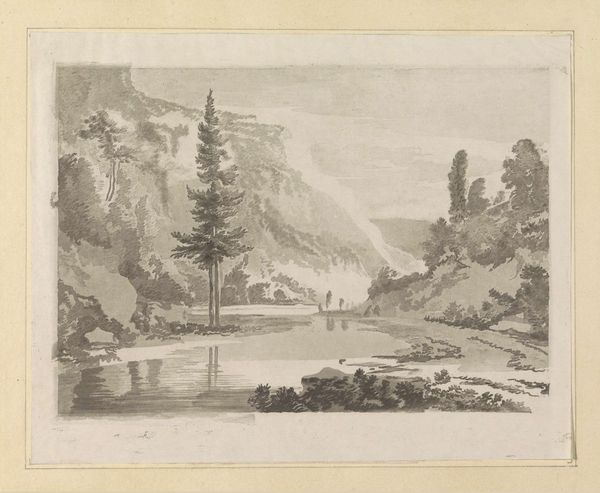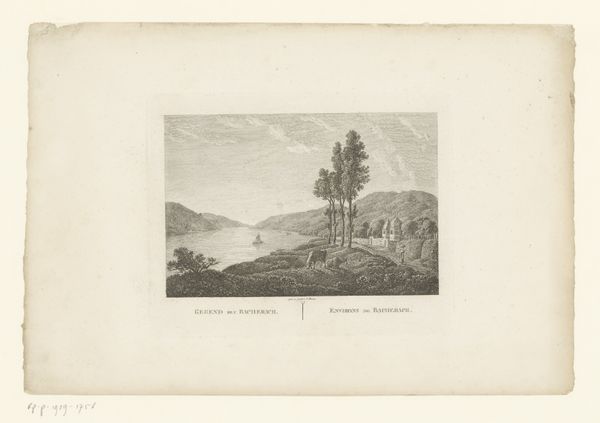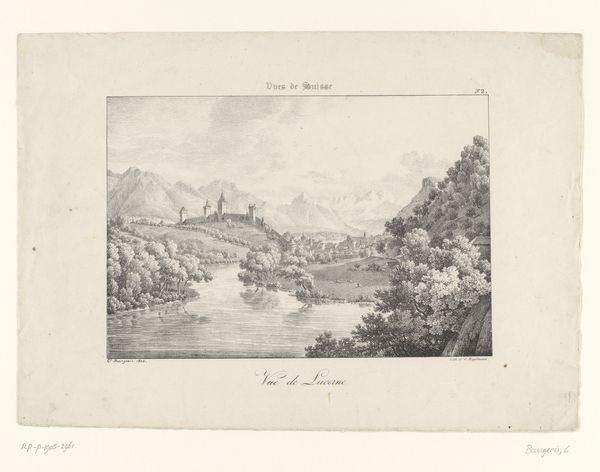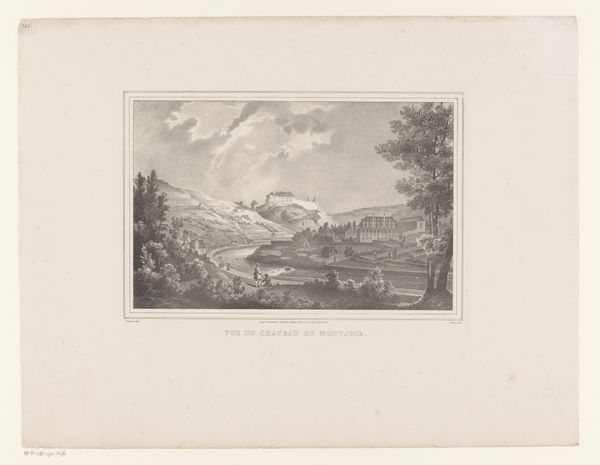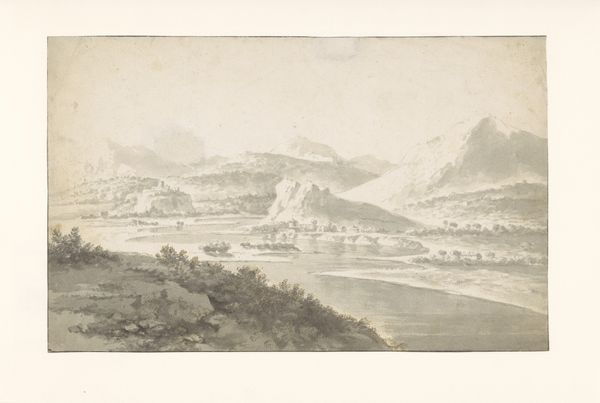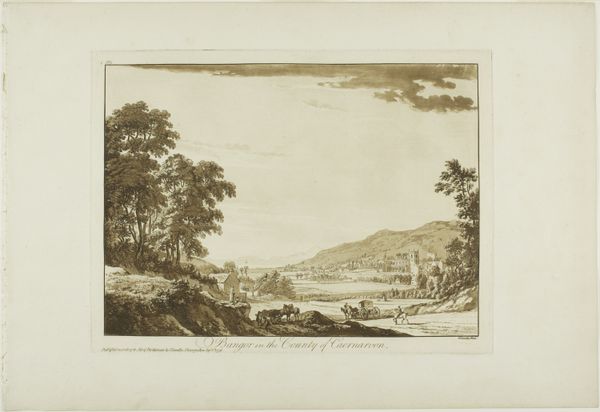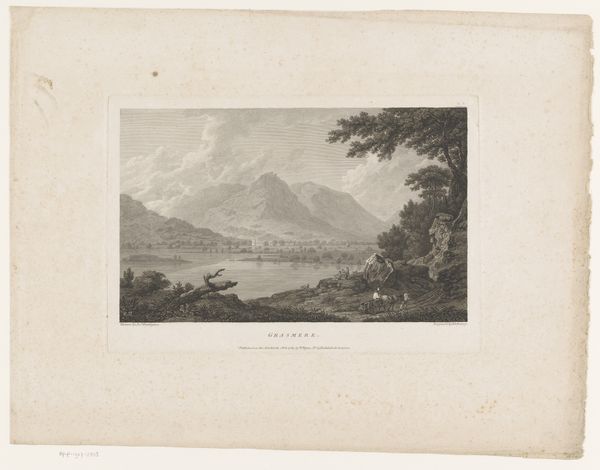
Drie monniken in boot op een meer met een klooster 1842
0:00
0:00
drawing, paper, engraving
#
drawing
#
landscape
#
paper
#
romanticism
#
line
#
engraving
Dimensions: height 185 mm, width 220 mm
Copyright: Rijks Museum: Open Domain
Curator: This engraving from 1842 by Johann Caspar Nepomuk Scheuren depicts, as its title suggests, "Three Monks in a Boat on a Lake with a Monastery." Editor: Immediately, I’m struck by the quiet stillness of it. The texture created by the engraving feels almost meditative; the limited use of ink makes the whole scene feel peaceful. Curator: Indeed, the Romanticism movement valued subjective emotional experience, nature, and often incorporated religious themes. I think we see that in play here. The monastery, almost obscured in the mid-ground, is a testament to institutions of faith amidst the sublime vastness of nature. What's interesting, materially, is the labor invested in this piece, to translate the three-dimensionality of the scene into such precise lines on a relatively small paper. Editor: The detail is striking, and I wonder, who was the target audience for this image? Was it a wealthy patron acquiring a memento of their travels, or was this intended for broader circulation, perhaps reinforcing certain social values? The monks are traveling. I find that fascinating because it is more focused on transit than arrival. The institution exists at the end point. What social functions are defined through religious practices? Curator: That’s an astute point. Considering the production of engravings in the 19th century, multiple impressions could have been made, widening its reach beyond an individual patron. Reproducibility made it very profitable, because even a drawing in such small dimensions could easily gain traction among collectors. It could be seen as a symbolic validation of the Church's continued presence in an era of increasing industrialization and changing societal structures. Editor: It becomes a potent symbol of the church not only surviving, but thriving as society modernizes and expands. Looking at it that way, it feels a lot more politically active. Curator: Agreed. It reminds us that seemingly simple landscape scenes can often reflect broader historical narratives. Thanks for opening my eyes to those political undertones! Editor: And thank you for pointing out the meticulous labor of its production—the tangible craft embedded in its existence. I really appreciate you.
Comments
No comments
Be the first to comment and join the conversation on the ultimate creative platform.
